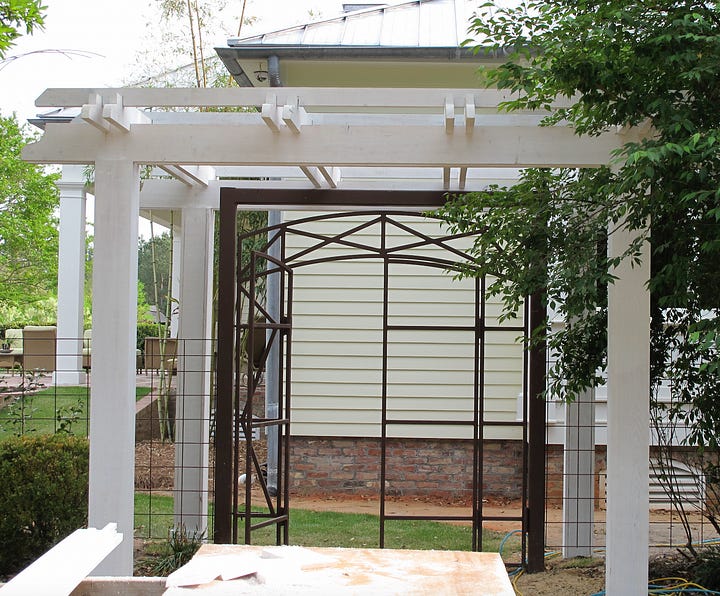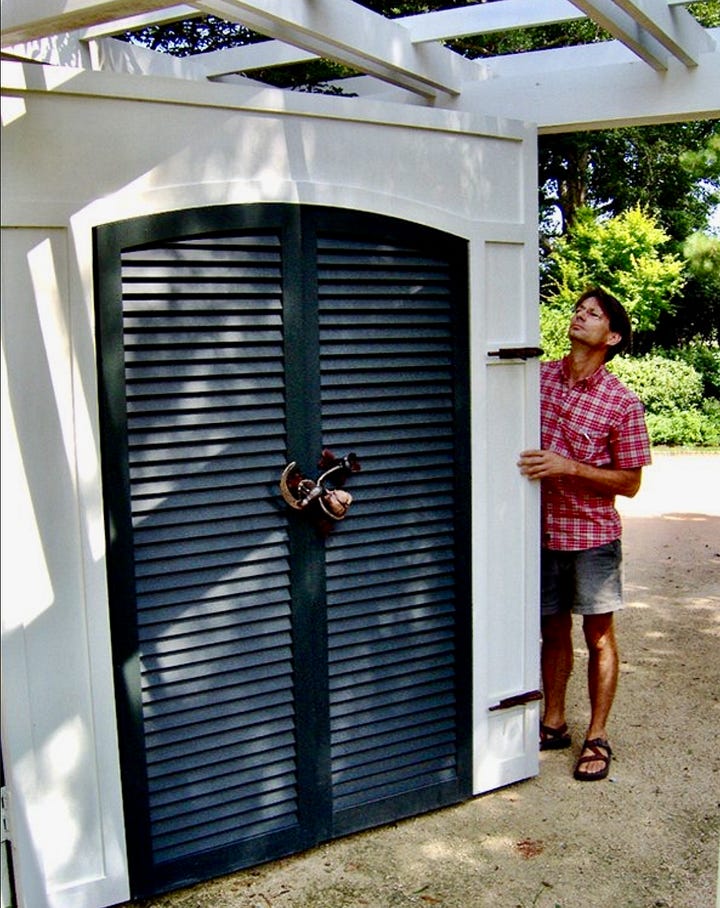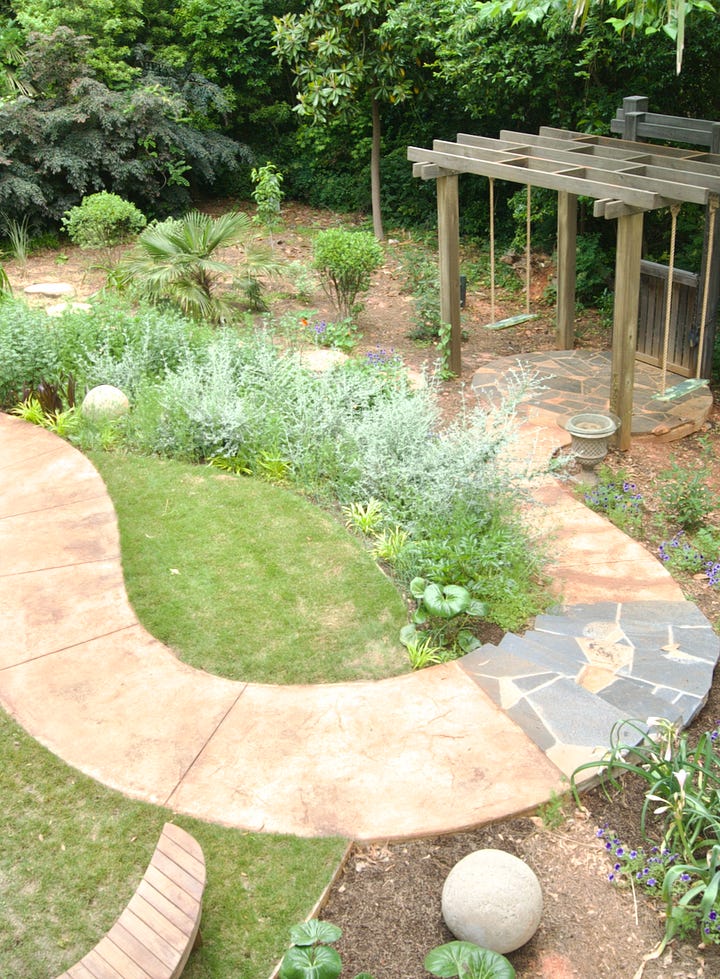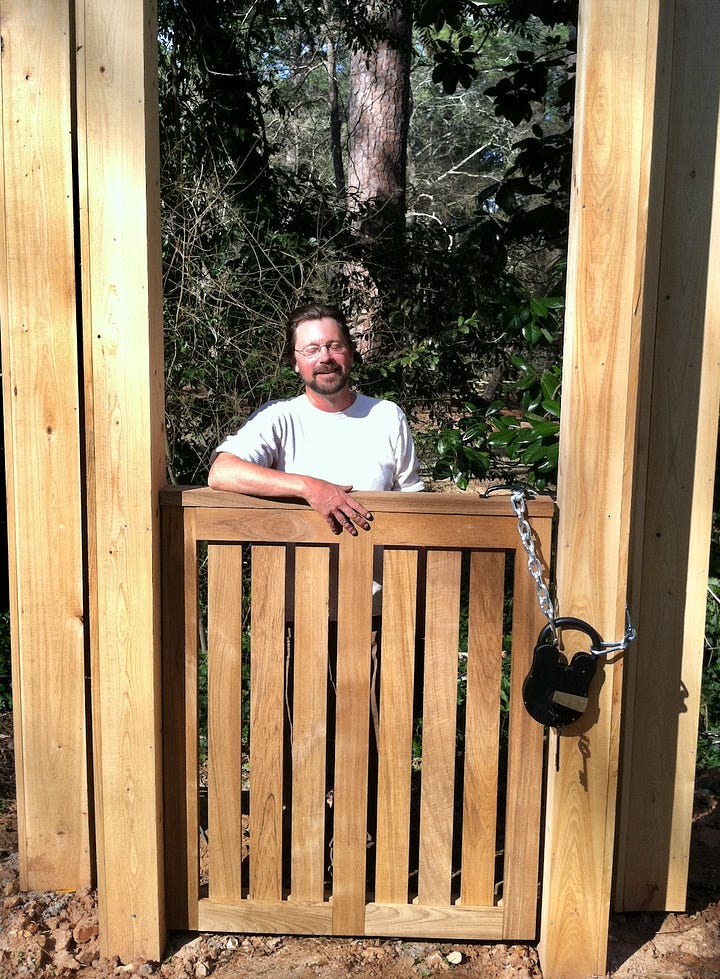Picture a garden gate that beckons you. A charming picket fence gate, a sleek butterfly gate of plasma-cut steel, or that wooden door from The Secret Garden.
Gates pull at something deep inside us - that promise of discovery beyond. Sometimes, as a garden designer, I love to play with that primal desire, and sometimes, I love to trick people, to amuse visitors, with a perfect, easy trick—the fake garden gate.
Garden tricks and tomfoolery weave through garden history. Hidden mirrors, squirting fountains and fake ruins make gardens personal and bring that delicious deception. The most famous is the opposite of a gate. It’s called a “ha-ha.” This illusion has been used around the world, possibly originating in Chinese gardens.
Like most visitors to England famed gardens, I’m intrigued by their ha-ha’s. I’m drawn to the illusion but also amazed by the orignial gardener’s intention. Who would go to so much work to delight me? An illusion builds a relationship between designer and visitor - even centuries after the designer is gone.
Over the years, I’ve orchestrated my share of slight-of-hand in master planning farms, botanical gardens and urban jewel box gardens. Gates can be particularly tricky because one absolute, fast rule of design is to never, ever cut off vehicular access to your garden. In public garden design, that’s critical for emergency vehicles. In any garden, you will one day, I promise, need to get a work cart in.
So here's the designer's dilemma: How do you accommodate a fire truck through what could be an ungainly, industrial-sized opening while still creating that magical, intimate portal that makes visitors' hearts skip a beat?
Let me show you some of my favorite solutions - gates that perform this double duty with style. Below you'll find sketches and before-and-after photos that reveal how we make this magic happen...
In sketch number one, this farm road had to be 16 feet wide to accommodate equipment such as tractors and grain combines. But it needed to look cute. My solution was to plant a crepe myrtle alleé with a 16-foot wide gate with a fake visitor gate.
The first photo is from the first year the gate was installed and crepe myrtle alleé planted. The next photo is about 12 years after installation and planting.
This simple gate doesn’t connect to a fence or barrier. It’s the entry to a children’s garden. It’s just a gate for the pleasure of passing through a gate.


This garden needed constant access for garden work carts and golf carts for caterers. The entire wall swings open. But for visitors, the double louvered gate opens with spectacularly fun latch designed and constructed by my creative friend Mary Alice Woodrum
On a tiny, steep hillside lot, I designed this garden to be seen from an upper patio, knowing clients would rarely go down into the garden. The strong lines lead to a cypress arbor with swings and a cypress gate by Andrew Adams.
The gate goes nowhere. It’s simply a focal point at the end of the garden. The client wanted to antagonize the neighbor so we put this giant lock on it.


When I write, I often use “I” far too much. As in “I designed this gate.” Not to disparage my design, creativity, and desire to have fun with visitors, but none of these projects would be anything more than sketches without my creative friends who have practical skills. So in homage to them, let’s end with this wonderful doorway by my great friend, the amazing, gone-to-soon, Jefferson Hubble
After Jefferson’s death, a dedicated group of his friends arranged the complex task of moving this door. You can see it now, and have the joy of stepping through it in 5-Points, Columbia, South Carolina.











Gates are truly magic. Thank you!
My word for today is "innovation", and these gates/faux gates are the very definition of the word! I love it!!